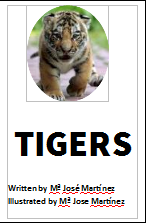La presencia de los pueblos íberos, romanos y visigodos en la zona se puede confirmar por los restos de cerámica, utensilios de metal, cuevas y muestras de arte doméstico y guerrero que los labriegos y constructores han ido encontrando enterrados en la zona. Del período romano se han hallado columnas y un sarcófago de piedra en el Alto de la Iglesia. Fue el pretor romano Cayo Flaminio y sus tropas quienes penetraron en San Agustín.
Llegó la Reconquista y muchos de los habitantes de la comarca fueron reclutados en el año 877, por el rey moro de Córdoba Mohamed I para luchar contra los cristianos. En el año 932, las tropas castellanas atravesaron Somosierra y Guadarrama, expulsando a los árabes. Tras esta campaña, San Agustín quedó en tierra de nadie, entre los dos ejércitos en conflicto.
Los primeros documentos escritos que se conservan son del siglo XIII y revelan que en el 1084, el rey Alfonso VI conquista San Agustín a los moros en su marcha hacia Toledo y manda repoblar la zona con gentes de Castilla.

